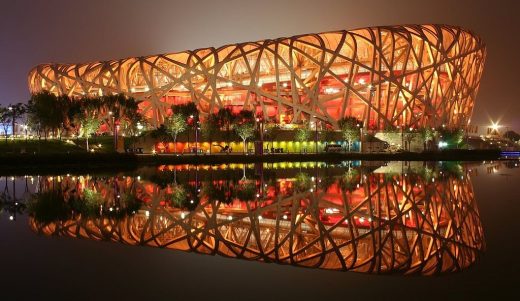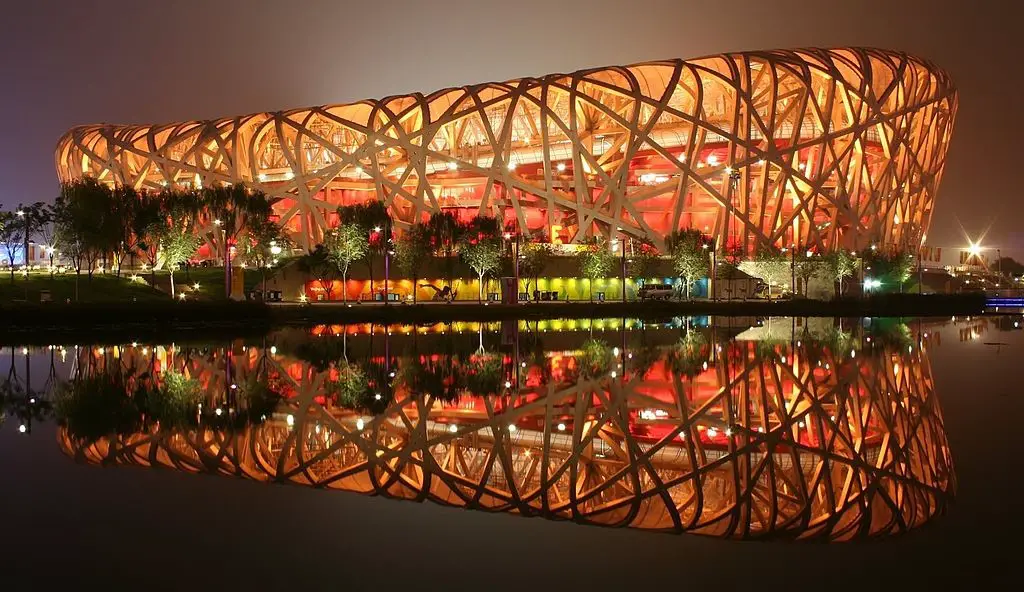Architecturally Impressive Sports Stadia, Stadium building design, Best arenas images
Architecturally Impressive Sports Stadiums
Stadium Buildings around the World – Major Sporting Arena Designs
21 July 2019
The World’s Most Architecturally Impressive Sports Stadia Revealed

photo : Wikimedia Commons
It’s not easy in the 21st century to design the perfect sports stadium. Traditionalists enjoy the heritage of many of the older sporting venues, all of which offer unique character, charm and personality. But fans are having to accept that sports clubs need to move with the times, providing stadia that tick all the right health and safety boxes, adequately cater for food and beverage requirements, whilst providing an unobstructed view of the action.
With that in mind, we’ve taken a look at some of the most architecturally innovative sporting stadia built in recent times for major sporting tournaments such as the FIFA World Cup and the Olympic Games.
Soccer City – Johannesburg’s symbol for contemporary African culture
The FIFA World Cup 2010 was the first time in the history of football that its global tournament was hosted in Africa. South Africa was the chosen host, with a view to breathing new life and hope into the South African economy and the next generation of football fans. The breath-taking Soccer City stadium in Johannesburg was rebuilt to host the World Cup final that year. The project was overseen by designer, Populous, which sought to use a spectacular cladding system from locally sourced materials to give the stadium’s façade unmistakably South African personality.
London Aquatics Centre – architectural design inspired by water
When London was selected to host the 2012 Olympic Games, it needed a brand-new home in Stratford to host its aquatic events. The now late award-winning architect, Zaha Hadid, who was awarded the Royal Institute of British Architect’s Royal Gold Medal for her lifetime work in February 2016, was chosen to design the new London Aquatics Centre. Hadid was famed for her organic architectural designs and was considered the best candidate to design a building inspired by water. With a sweeping, undulating roof and bundles of natural light, it’s become a tremendous sporting arena on London’s skyline.
Beijing National Stadium – the “Bird’s Nest” is influenced by Chinese ceramics
Another Olympic-themed stadium, this time in Beijing. The Chinese city was the 2008 host of the Summer Olympics and it needed an Olympic Stadium fit for a China that was experiencing rapid economic and industrial growth. Chinese artists, Ai Weiwei worked with architects, Herzog & de Meuron to create a stadium inspired by Chinese ceramics. The circular nature of the arena symbolises heaven and the nearby square is designed to look like the Chinese symbol for Earth. The lattice effect steel which supports the stadium 360-degrees, saw the stadium earn the nickname the “Bird’s Nest”.
Wembley Stadium – successfully retaining the iconic arch
When the nation said a fond farewell to the old Wembley Stadium, few would have predicted that the Twin Towers could have been replaced by a more architecturally impressive statement. However, the new Wembley has certainly managed to achieve that. With its breath-taking arch standing 436 feet tall, with a span of 1,033 feet, it’s the biggest single-span roof configuration on the planet. It has since become an iconic venue for some of the biggest events in the sporting calendar, from Champions’ League finals to Football League playoffs and NFL games. It’s therefore become a sports bettor’s paradise, with Oddschecker listing all the latest sportsbook promotions covering action hosted at Wembley and elsewhere in the UK.
MetLife Stadium – a surprisingly small carbon footprint
New York’s brand-new MetLife Stadium cost an estimated $1.6 billion and has since become the second biggest stadium for NFL action in the U.S. There are two aspects of the MetLife Stadium design that impress us. Firstly, its glass façade exterior and aluminium louvers can change colour depending on which New York NFL team (Jets or Giants) is playing. Secondly, although the MetLife Stadium is twice the size of the city’s former Giants Stadium, its carbon footprint is around a third (30%) less than their previous abode.
Estadio Municipal de Braga – a nod to Braga’s industrial roots
Our final selection is something of a leftfield choice, but it’s certainly a remarkable feat of engineering. The Estadio Municipal de Braga was built for the Euro 2004 Championships and to host Portuguese top flight football team, Sporting Braga. Interestingly, there’s only two stands to this stadium, both of which run along the pitch touchline.
That’s because one end behind the goal displays the open face of a quarry, while the other offers a panoramic view of Braga. The sweeping, canopy roofs of both stands are connected via steel strings high above the pitch. The boldness of this project makes more sense when you realise that Pritzker Price-winning architect Eduardo Souto de Moura was the brains behind the design.
Stadium Buildings
Soccer City Stadium South Africa

Soccer City Stadium pictures from BUE & Partners
South Africa World Cup Stadiums
Football for Hope Centres Africa
Cape Town Stadium, South Africa – World Cup 2010 venue
Durban Stadium, South Africa – World Cup 2010 venue
Populous – Stadium architects
Comments / photos for the Architecturally Impressive Sports Stadia page welcome

